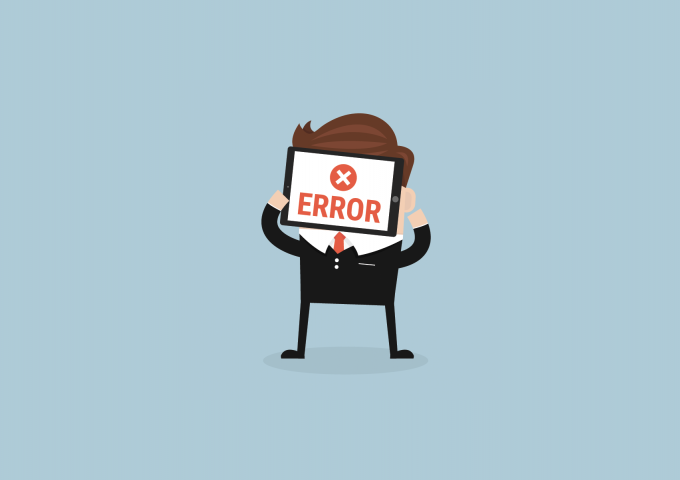The ten most common mistakes in online stores


Having an online store can be great fun, but many things can go wrong. And that’s a pity, because sometimes all it takes to prevent mistakes is some minor adjustments! Below you’ll find a list of ten common mistakes in online stores. Be sure to avoid them at any costs! :-)
1. Dated/incorrect content
It’s not uncommon to see online stores with dated content, such as references to feasts that have meanwhile passed, closed-on-holiday notices that occurred weeks ago or promotions that have long expired. Regularly check your pages (so not only your homepage) and upload new, up-to-date content. The same goes for your auto-reply – don’t forget to deactivate it after a shutdown!
2. Too many menus in the navigation bar
Less is more! Don’t try to cram everything into your navigation bar, but stick to a maximum of eight to ten categories. Make sure they all fit on one line in the navigation bar, otherwise your visitors won’t know where to look and they might even get lost on your site.

3. Poor image quality
Your (product) images are one of the key elements in your online store. Unlike physical stores, online stores don’t offer customers the opportunity to soak up the atmosphere and physically hold the products. That’s why your images should give your visitors a realistic idea of what the product is like (check out how to shoot great product photos). It may sound obvious, yet we still often find sites with blurred, grainy, bland or wrongly (re)sized images. A handy tool to reduce your image size is Pixlr. To find out how this tool works, click here.
4. Flawed legal documents
It may be tempting to simply copy-paste the general terms and conditions from a store similar to yours, since it saves you time and money, but remember that is copyright infringement. Moreover, those terms and conditions are not tailored to your store. We also often see stores where the returns policy is either missing or not easily found.
5. Missing corporate details
Merchants often forget to include their company name and/or contact details on their site. This can result in a hefty fine! So remember to mention not only your contact details, but also your VAT number and registered address. If visitors are not welcome at this address, make sure you mention this clearly.
Tip: Put your corporate details or a link to these details in your footer.
6. Non-responsive website
Desktops are still the main devices used for online shopping, but orders are increasingly being placed using tablets and mobile devices. It is expected that by 2018, 49% of all online purchases will be made via mobile devices, particularly tablets. Moreover, Google gives precedence to mobile-friendly – or responsive – sites. That being said, many online stores are not responsive. What about yours? Click here to find out how to make your store responsive in just a few easy clicks. The Mobile-Friendly Test allows you to check whether your site meets Google’s conditions.
Tip: Check the blog '5 tips for a responsive online store'.

7. Bad product descriptions
You’re proud of your products and you want to share as much information as possible about them. We can’t blame you! However, an information overkill results in visitors not seeing the wood for the trees. It’s better to cluster your product information in a maximum of one paragraph, in which you try to answer consumers’ questions (including important information such as shipping costs). Less is more!
8. Unclear Call To Action
A Call To Action (CTA) is a button you want your visitors to click on. For online merchants, it is usually a ‘Buy’ button. Make sure this CTA is clearly visible and describes the action perfectly, and use a contrasting color and a larger size to make it stand out. To change the color of your CTA go to ‘Design/Template settings/Forms’.

9. Not measuring your site’s performance
Measuring your performance is the key to success! Keep track of your statistics via Google Analytics from day 1 to see where your visitors come from, how long they stay on your website and where they leave your store. This information will allow you to optimize your site. Analyze which content (pages) score well and try to apply what works well to the pages that are not as popular among visitors or those where visitors tend to leave your store.
10. Promotion
It takes more than a beautiful, well-stocked store to achieve success. You also need to make sure visitors can actually find your store. To boost your ranking in Google, you need to meet the three key criteria: technique (leave that to us!), content (see points 1 and 4) and authority (obtained through link building).
Tip: Email marketing is one of the most commonly used and efficient marketing methods for smaller online stores. Click here to find out how to boost your sales through newsletters.
All these mistakes result in an online store that does not look professional, which is, in fact, an obstacle to success. Let’s face it, would you spend your money in a store – not only online – that doesn’t look professional and trustworthy?
I hope these tips have been useful in making your store not a good one, but a great one!
